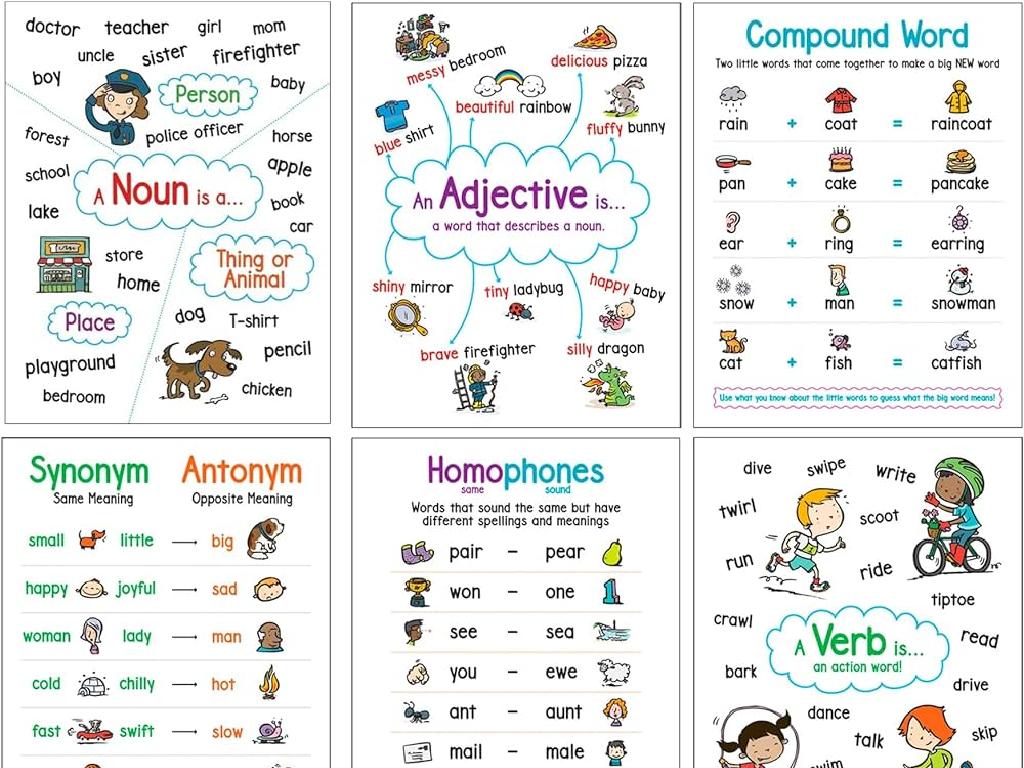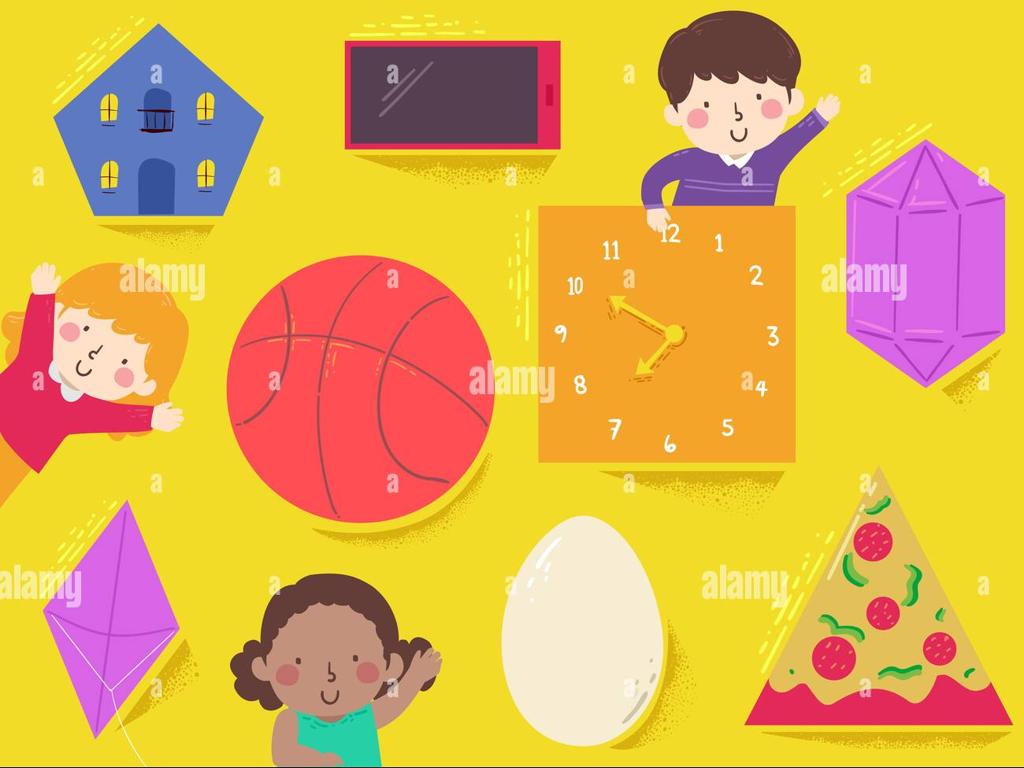Represent Numbers - Up To 9
Subject: Math
Grade: Kindergarten
Topic: Numbers And Counting To 9
Please LOG IN to download the presentation. Access is available to registered users only.
View More Content
Welcome to Numbers!
– Greetings, little mathematicians!
– Today’s focus: Numbers up to 9
– We’ll learn to recognize and write numbers 1 through 9
– Numbers help us count
– Think of numbers as fun tools for counting
– Counting things around us
– Let’s count toys, books, and more together!
|
This slide is designed to introduce kindergarten students to the concept of numbers and counting up to 9. Start the lesson with a warm and engaging greeting. Emphasize that numbers are everywhere and they are fun tools that help us measure and understand the world. Show them physical objects like blocks or toys to count together in class. Encourage the children to participate by asking them to count items they use daily, like crayons or snacks. This interactive approach will help them grasp the concept of numbers and their use in everyday life. Make sure to praise their efforts to build confidence and excitement about learning math.
What Are Numbers?
– Numbers as counting symbols
– Numbers like 1, 2, 3 tell us ‘how many’
– Daily use of numbers
– We count toys, cookies, and friends!
– Learning numbers 1 to 9
– Recognize and say numbers 1, 2, 3, up to 9
|
This slide introduces the concept of numbers to Kindergarten students. Begin by explaining that numbers are special symbols we use to tell us ‘how many’ of something we have. Emphasize the importance of numbers by discussing their daily use, such as counting toys, cookies, or even friends. Then, focus on the numbers 1 through 9, encouraging the children to recognize and say the numbers out loud. Use visual aids like number flashcards or objects for counting to make the learning process interactive and engaging. The goal is to ensure students can identify and understand the sequence of numbers up to 9.
Learning the Number 1
– The concept of number 1
– One as a quantity
– Example: 1 single apple
– Showing 1 with fingers
– Hold up 1 finger to show ‘one’
– Counting 1 item
– Practice by picking 1 toy
|
This slide introduces the number 1 to Kindergarten students, emphasizing its value as the first number in counting. Start by explaining that the number 1 represents a single unit or one thing. Use tangible examples like one apple to illustrate the concept. Encourage the children to show the number 1 by holding up one finger, which helps them connect the numerical concept with physical representation. Finally, involve the students in an activity where they count out one item from a group, such as one block or one crayon, to reinforce the idea of ‘one’. The goal is to ensure students can recognize, represent, and understand the number 1 in various contexts.
Learning About the Number 2
– This is the number 2
– Two things example: 2 balloons
– Imagine having 2 yummy cookies
– Counting 2 fingers
– Hold up 2 fingers and count: 1, 2
– Practice with 2 items
– Find 2 toys and count them
|
This slide introduces the concept of the number 2 to Kindergarten students. Start by showing them the numeral ‘2’ and explaining that it represents the quantity of two items. Use simple, relatable examples like two balloons to illustrate this concept. Engage the students by asking them to hold up two fingers on their hand and count together with you. This helps them associate the number with a physical quantity they can see and touch. Finally, encourage the children to practice counting two items, such as toys or blocks, to reinforce the concept. The goal is to make the learning experience interactive and tangible.
Counting Objects from 3 to 9
– Counting starts at number 3
– Every number matches objects
– For example, 3 apples, 4 balls
– Count objects for numbers 3-9
– We’ll use toys to count together in class
– Practice counting with items
|
This slide is aimed at helping Kindergarten students understand the concept of numbers by associating them with physical objects. Start by reinforcing the counting sequence from 3 to 9. Use classroom items or illustrations to show the corresponding number of objects for each number. For instance, display 3 apples when teaching the number 3, and so on, up to 9. Engage the students by counting out loud together and encourage them to bring items from home for the next class to practice counting. This hands-on activity will help solidify their understanding of numbers and quantities.
Counting Practice: Matching Objects
– Practice counting together
– Match objects to numbers
– Find objects and decide if it’s 1, 2, 3… up to 9
– Understand counting’s purpose
– Counting shows the total number of items
– Recognize quantities up to 9
– See a group and say if it’s 5, 6, 7… up to 9
|
This slide is aimed at helping Kindergarten students practice counting objects and matching them to the correct numeral. Start by counting objects together as a class to reinforce the concept of numbers. Then, have students participate by matching sets of objects to the corresponding numeral, reinforcing their number recognition and counting skills. Explain that counting is useful for understanding how many items are present in a group. Use a variety of objects to keep the activity engaging and ensure that students can recognize quantities up to 9. For the activity, consider using items like blocks, stickers, or fruit to make the learning process tangible and fun. Encourage students to count aloud and use their fingers if necessary. This hands-on approach will help solidify their understanding of numbers and quantities.
Fun with Numbers!
– Numbers are exciting!
– Count using fingers
– Each finger represents one number
– Play a finger numbers game
– Show 1 to 9 by raising fingers
|
This slide is designed to engage Kindergarten students with the concept of numbers in a fun and interactive way. Start by expressing enthusiasm about numbers and how they are a part of everyday life. Demonstrate how each finger on our hands can represent a number from 1 to 9, which helps in visualizing and understanding the concept of counting. Introduce a game where students take turns showing different numbers using their fingers, which reinforces their ability to represent numbers physically. This activity not only makes learning numbers enjoyable but also enhances their fine motor skills and number recognition. Be prepared with variations of the game to cater to different skill levels within the class.
Let’s Sing: Numbers 1 to 9
– Singing enhances number memory
– Learn a song about numbers 1-9
– A catchy tune helps us remember the sequence of numbers
– Singing and dancing with numbers
– Movement through dance makes learning engaging
– Fun with numbers boosts learning
|
This slide introduces a musical activity to help kindergarteners learn and memorize numbers 1 to 9. Singing is a powerful tool for memory retention, and combining it with dance and movement can make the learning process more enjoyable and effective. The song should be simple, repetitive, and easy to follow, allowing the children to quickly pick up the rhythm and the sequence of numbers. Encourage the children to sing loudly and clearly, and to perform any accompanying actions or dances that help reinforce the numbers. This activity not only teaches numerical order but also promotes physical coordination and classroom unity through a shared, fun experience.
Class Activity: Number Hunt
– Let’s go on a Number Hunt!
– Find items for numbers 1 to 9
– Look for 1 apple, 2 pencils, etc.
– Count objects with classmates
– Work in pairs or small groups to count
– How many items did we find?
|
This interactive activity is designed to help Kindergarten students practice counting and recognizing numbers up to 9. Set up the classroom with various objects and have the children search for items corresponding to each number from 1 to 9. Encourage them to work together in pairs or small groups to foster teamwork and collaborative counting. As they find objects, they should count them out loud and present their findings to the class. Possible variations of the activity could include: a timed hunt, finding items of a specific color for each number, or even drawing the items they’ve counted on a collective poster. The goal is to reinforce number recognition and counting skills in a fun, engaging way.
Great Job on Learning Numbers!
– Amazing job learning numbers!
– Numbers help us count things
– Numbers like 1, 2, 3 up to 9 are used to count objects, people, and more.
– Applaud yourselves for hard work
– Clap your hands to celebrate your learning!
– Keep practicing counting to 9
– Practice makes perfect! Try counting toys, books, or even your fingers.
|
This slide is a celebration of the students’ achievement in learning to count up to 9. It’s important to reinforce the concept that numbers are tools we use in everyday life to quantify and organize the world around us. Encourage the children to feel proud of their progress and to understand that learning numbers is a big step in their educational journey. The round of applause is a fun way to end the lesson on a positive note, and the reminder to keep practicing aims to motivate the students to continue learning and enjoying math. As a follow-up, you can suggest parents to engage children in counting exercises at home, like counting toys during cleanup time or counting steps as they walk.






